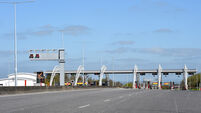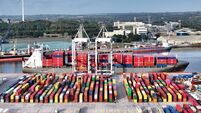Ireland’s economy is like no other in Europe. Most other countries employ gross domestic product, or GDP, as the measure that is best suited to track growth and contractions in their economic activity.
However, a myriad of specific factors has made the GDP measure a tad misleading in an Irish context.
It is true, however, that Ireland entered a technical recession last year, but only a student of Economics 101, or an academic purist posting on social media, would fully bet the house on GDP reflecting the performance of the economy, as experienced by most households.
For most people, the fact of the matter is that GDP remains a weak indicator in determining the true health of the economy, and while Ireland’s economy faces challenges and crises like almost everywhere on the planet, its economy is not in recession, regardless of what GDP is indicating.
Why is this the case? Why is GDP an accurate indicator for countries such as Germany and Britain, but not for Ireland?
To answer this, we need to venture back a few years. In the 1990s, Ireland attracted much international attention due to an impressive growth record, helped in large part by an influx of foreign investments and subsequent rises in both employment and wages.
Much of this growth, which became increasingly diversified and export-led, started to make Ireland prosperous from the late 1990s. That era, or at least the early virtuous years of exports-led growth, had its own name: The Celtic Tiger.
While Ireland’s popularity amongst multinationals soared due to its tax-friendly regime, the Government went on a spending spree, and Central Bank regulators allowed the banks to provide huge amounts of property loans to commercial property developers and to households, in an economy that was already booming.
When the property boom quickly turned into a property bust, Government tax receipts quickly dried up, leading to a gulf between what the Government was taking in and what it was obligated to spend. Following a challenging few years which saw the State bailed out in late 2010, and unemployment exceeding 15%, the economy began to grow again, at a rapid pace.
In 2015, Ireland’s GDP grew by 26%. The news gained international attention and was slated by economists, with Nobel economics laureate Paul Krugman coining the derogatory “leprechaun economics” term to describe the outsized economic performance.
The international accounting of a very small handful of multinationals — including Apple — which have significant bases in Ireland, were identified as contributing to the explosive GDP growth number. Ireland had just posted the highest-ever GDP growth in Europe since the end of the Second World War. Apple had played its part by moving parts of its intellectual property assets to an Irish domicile, which led to odd outcomes for Ireland’s national accounts. No matter how unfairly, the explosive GDP number meant Ireland faced a credibility issue.
Gross national product was already well-known and long-used for decades to help give a more accurate measure of Irish economic activity.
Among other things, GNP excludes the repatriated profits of multinationals.
However, it was not enough to win back credibility, with the GNP figures still skewed by the massive aviation leasing firms based here.
Officials went back to the drawing board to research the uses of measures such as modified domestic demand.
As the Central Statistics Office (CSO_ states, this measure goes further in trying to exclude large transactions of foreign corporations that do not have a big impact on the domestic economy.
Modified domestic demand takes into account personal and government consumption and investment but excludes investment in imported IP and aircraft for leasing.
Is it a perfect measure of the economy? No. But for most people, it is better than GDP.
So, how did Ireland enter a technical recession last year? The definition of a recession is when a country’s GDP contracts for two consecutive quarters. That is what happened in 2023, but using the GDP measure.
However, GDP gives a distorted picture thanks to the more than 1,500 multinationals, including the world’s top tech and pharmaceutical firms, that have significant bases here. They bring with them massive amounts of intellectual property assets and profits that will eventually be repatriated.
For a more accurate explanation of what is to come, the European Commission this week said the Irish economy, which avoided recession last year when measured by modified domestic demand, will continue to grow this year, helped by “a resilient labour market, decelerating inflation, and rising real incomes” into 2025.
“As long as the risks from war and inflation do not worsen, the outlook for Irish exports will also, in time, brighten,” the commission said.

Unlimited access. Half the price.
Try unlimited access from only €1.50 a week
Already a subscriber? Sign in
CONNECT WITH US TODAY
Be the first to know the latest news and updates














